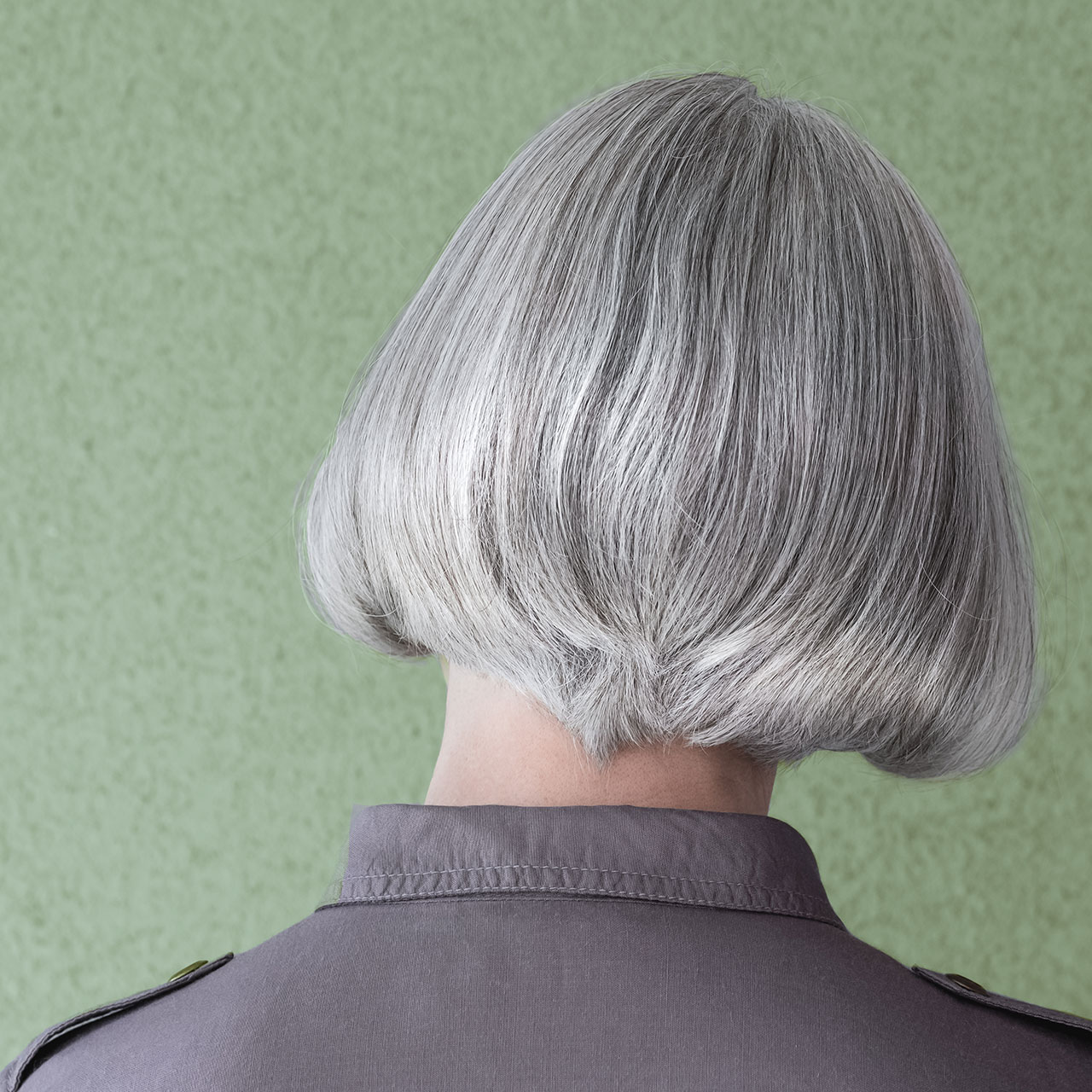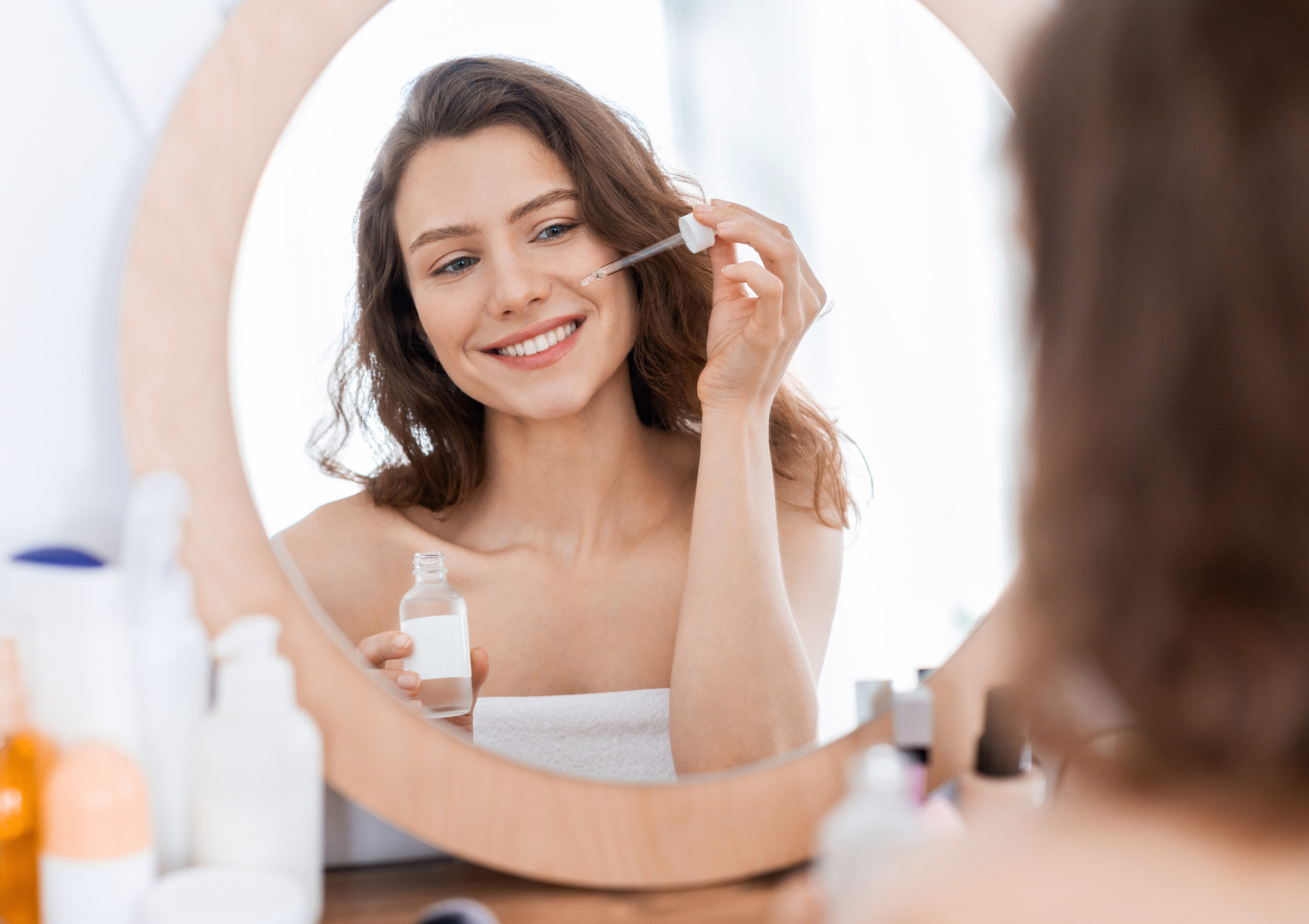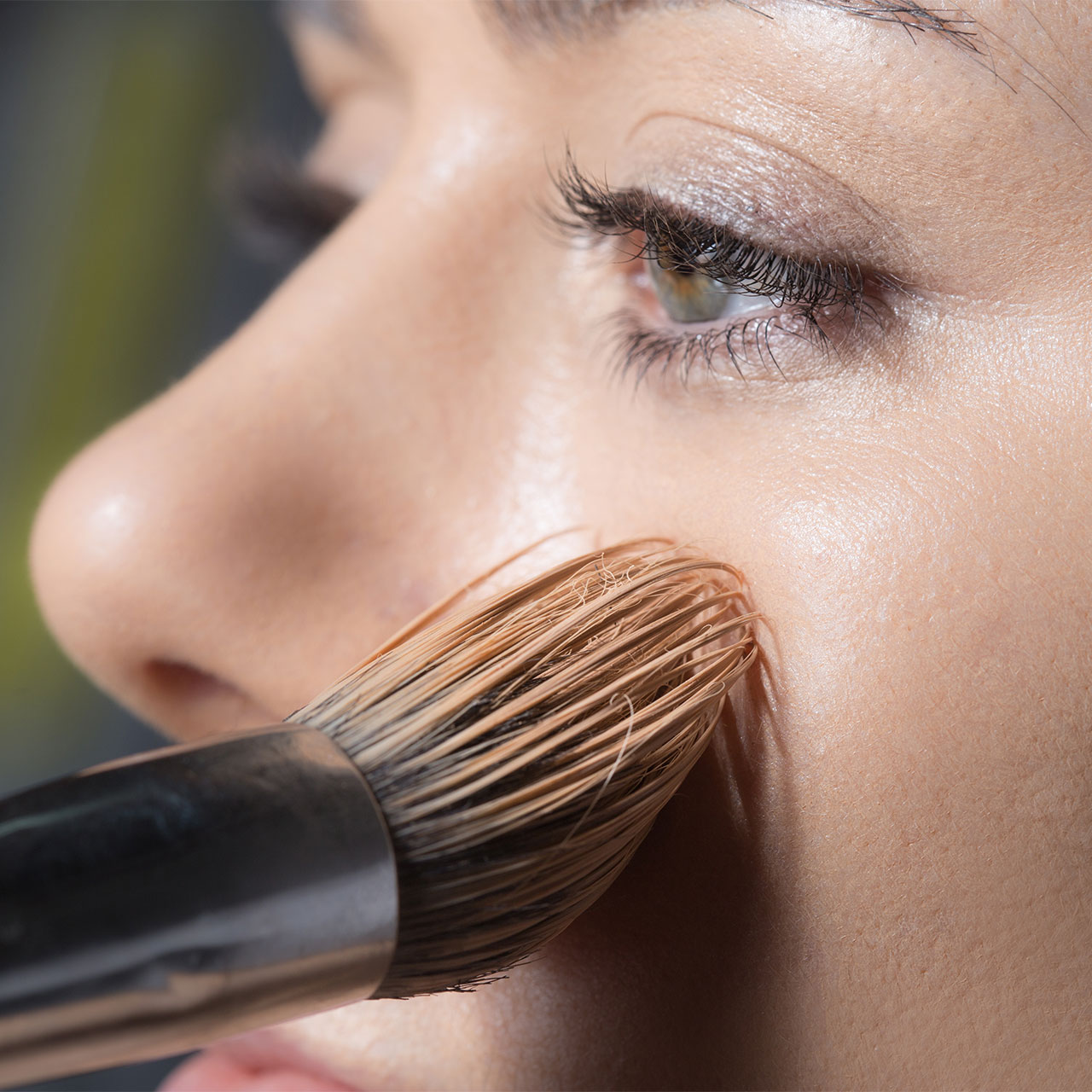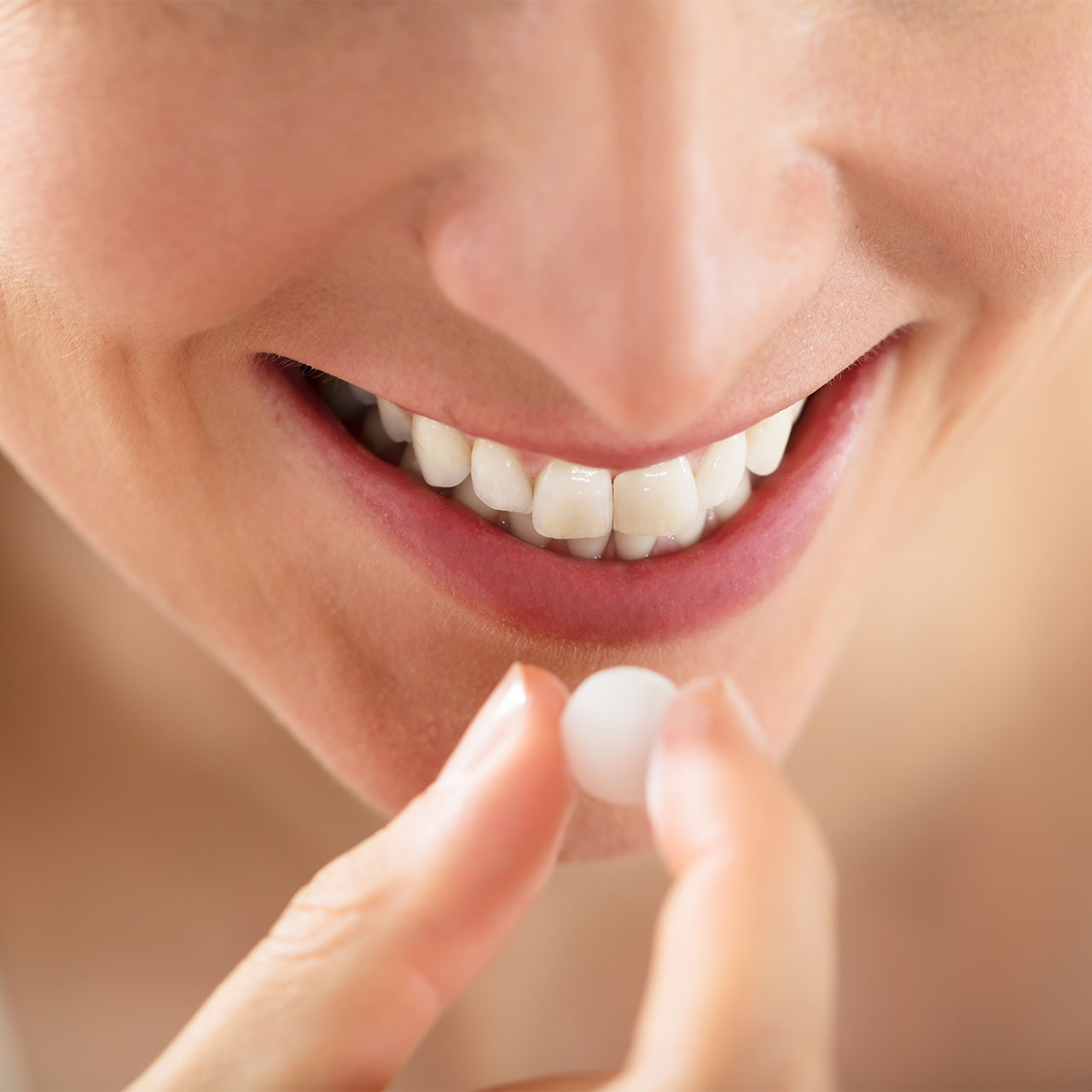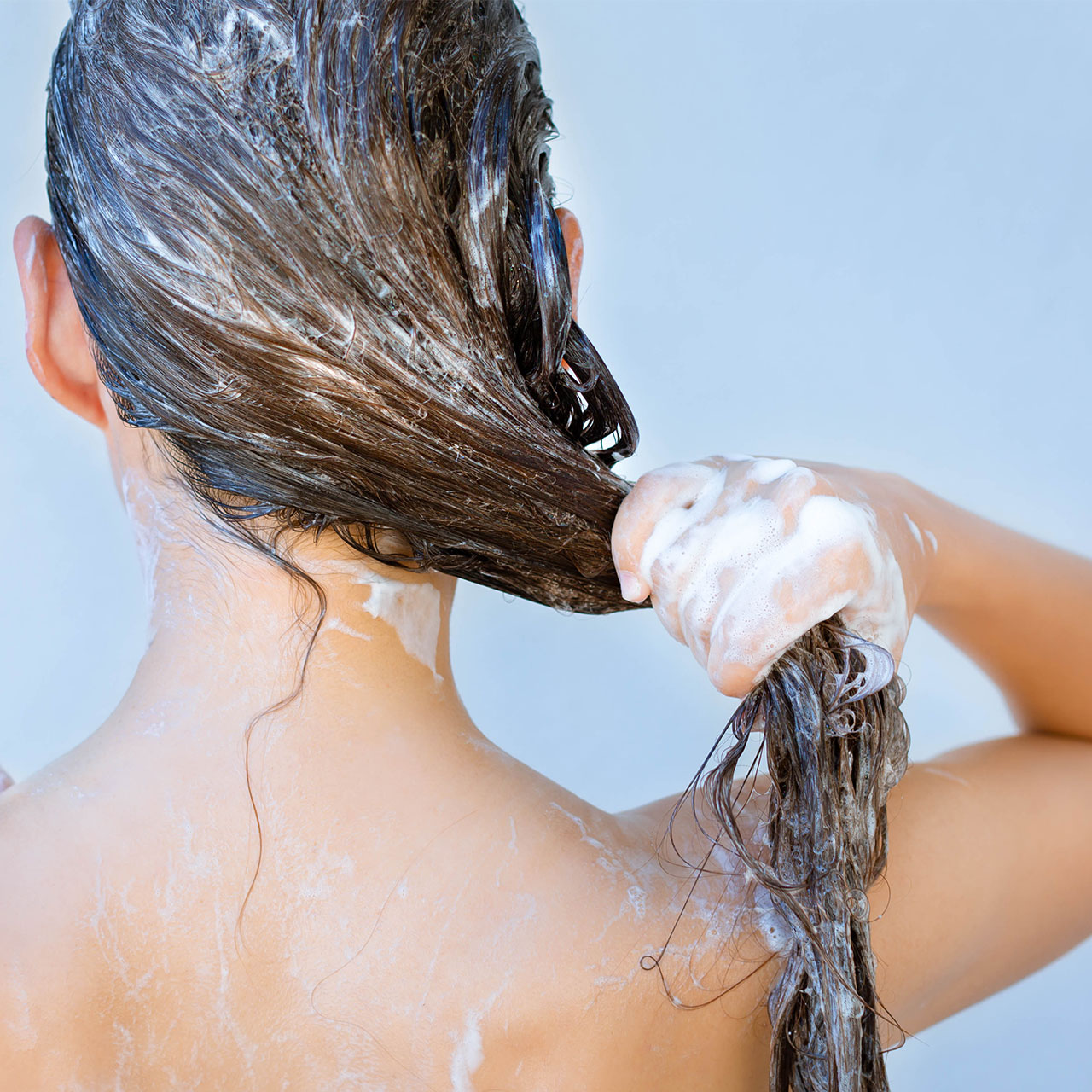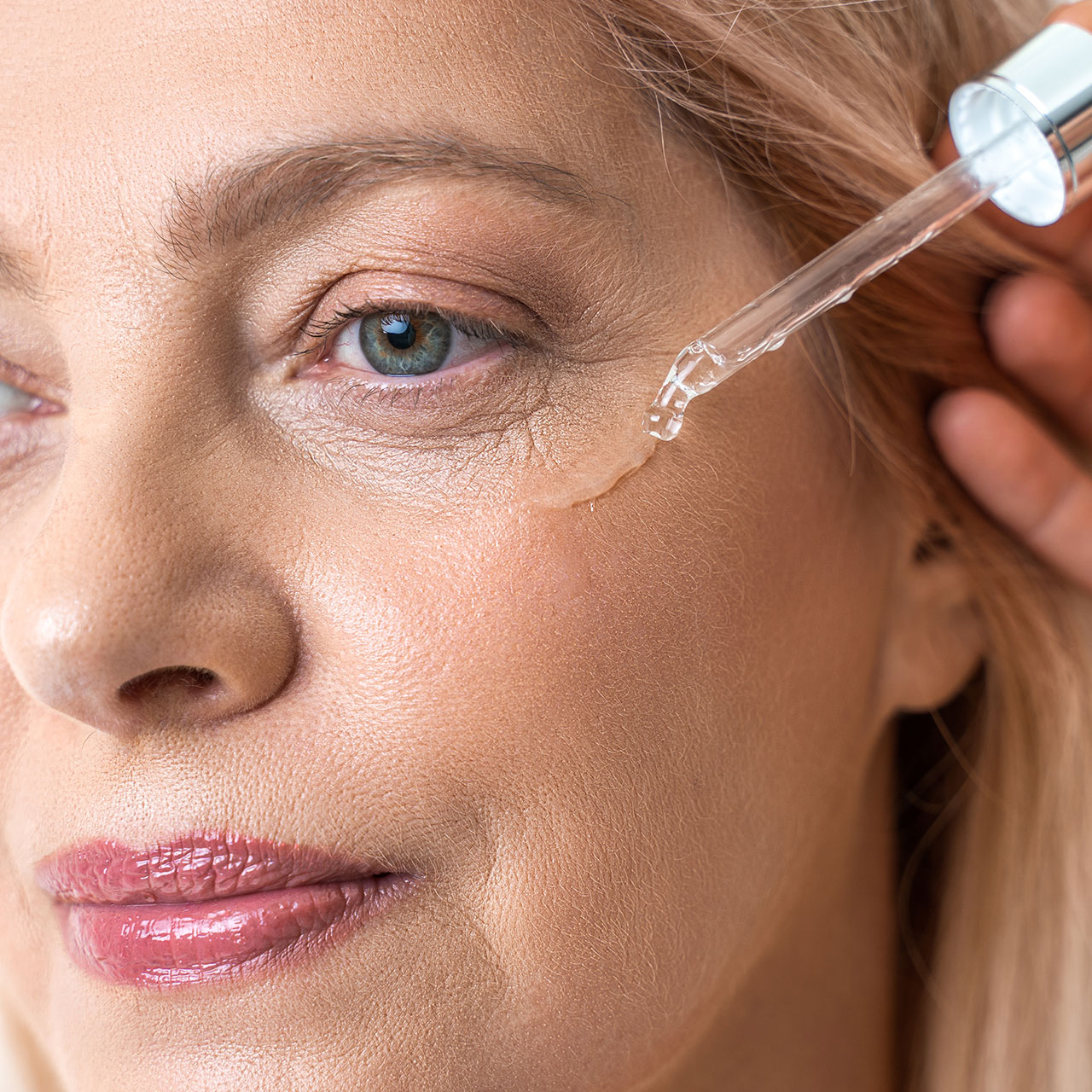Having acne is definitely a difficult situation to be in. For most of us, it can go so far as feeling uncomfortable and losing confidence. In fact, getting acne marks as a result of the breakout can sometimes make you feel even worse.
However, it’s important to understand that having such scars doesn’t mean it’s the end of it all. Thankfully, it can still be treated. So, how exactly do you get rid of acne marks? To find out, we asked Dr. Marisa Garshick, a leading board-certified dermatologist at Manhattan Dermatology and Cosmetic Surgery and advisor of BioRepublic. Keep reading to see what she has to say about its causes, home remedies, and medical treatments.
How Are Acne Marks Caused?
According to Dr. Garshick, “When acne breakouts severely penetrate the skin, they can damage the skin and the tissue beneath it. As the acne clears, the body works to repair this damage. Minor abrasions to the outer layer of skin (epidermis) don’t tend to result in scarring because the body can more easily regenerate the skin’s original structure. But when the dermis (the layer beneath the epidermis) is deeply affected, the skin must produce new collagen fibers, resulting in new tissue that’s often different in pigmentation and texture than the original portion of skin.”
She warns, “Acne marks can be formed from picking at acne and related scabs. While popping pimples can indeed flush out the excess debris and cells, it can further irritate the dermis and affect the surrounding tissue. This can lead to more aggressive breakouts and, eventually, scarring.”
Dr. Garshick enumerates the three types of acne scars:
Atrophic scars – “These scars appear as small indentations in the skin. They occur when the skin does not make enough fibroblasts in the healing process. Fibroblasts are cells that play a crucial role in wound healing and the synthesis of collagen.”
Hypertrophic scars – “These occur when the skin makes too many fibroblasts as the acne spot heals, causing a raised scar.”
Keloid scars – “These are similar to hypertrophic scars but are typically much thicker than the original acne spot. They are usually darker than the surrounding skin and can be red or brown. Keloid scars may also cause symptoms, such as itchiness or pain.”

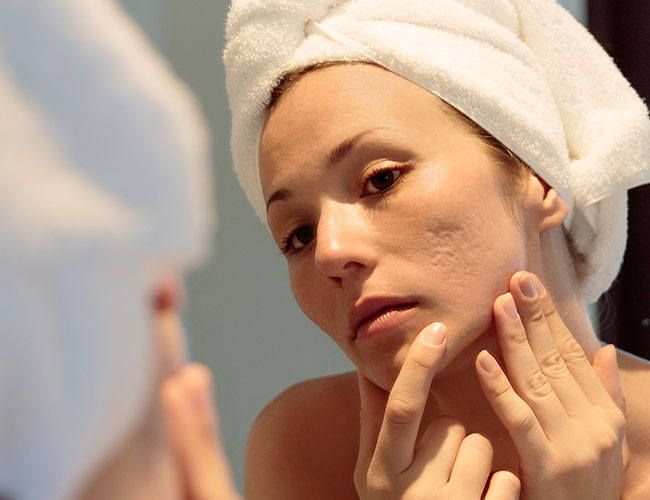
How Do You Get Rid Of Acne Marks?
When it comes to getting rid of acne marks, Dr. Garshick’s number one advice is to avoid picking them. She emphasizes, “Picking at breakouts or already existing scars can often lead to more inflammation and make the scarring worse, so it is best to avoid squeezing, poking or touching any scars.”
She also shares that “various remedies are available over the counter, many of which can help people manage their acne and reduce the appearance of scars.” Below are some of the home remedies Dr. Garshick suggests you try:
Apply an exfoliating sheet mask for acne
“Using a chemical exfoliant—[such as] glycolic acid, lactic acid and salicylic acid—is one of the best things you can do for your blemish-prone skin. Regular usage will rejuvenate your skin and reduce scarring and dark spots from past acne breakouts and prevent new blemishes from appearing.”
As for product recommendations, Dr. Garshick mentions “your best bet is BioRepublic's Extra Exfoliation Sheet Mask.” She adds, “This facial sheet mask for acne uses lactic acid to destroy bacteria and unplug your clogged pores. Unlike other acids, lactic acid is gentle enough for blemish-prone skin.”
Include retinoids and AHAs in your skincare routine
“Some topical retinoids may help get rid of acne scars,” Dr. Garshick notes. “Topical retinoids work to regulate skin cell turnover and can improve the overall appearance of skin tone and texture. Retinoids can also help lighten hyperpigmented acne scars, including those in people with darker skin tones. An example includes Differin Gel.”
Another ingredient that might help get rid of acne marks and discoloration due to scarring is Alpha Hydroxy Acid. Also known as AHAs, Dr. Garshick describes them as “a mild form of acid that scrapes away the outer layer of skin to reveal fresh, new skin underneath.”
Don’t skip sunscreen
Always remember that sunscreen is essential because it helps protect your skin from the harmful UV rays of the sun. “While it may seem obvious to some, it is a key ingredient to help reduce the appearance of acne scars, especially hyperpigmented scars,” explains Dr. Garshick. “With sun exposure, scars have the potential to darken which can make them more noticeable. While those with acne are often hesitant to apply different products to their skin for fear of worsening breakouts, it is important for those with acne to remember to apply sunscreen and should look for one that is non-comedogenic and won’t clog the pores.”
Treat your scars like wounds initially
Dr. Garshick shares, “[When] people pick at their acne spots, they end up looking like a cut or an open wound. During this time it is best to avoid using anti-acne medications and ingredients like benzoyl peroxide or salicylic acid as this can dry the skin out.” As an alternative, she tells us to “focus on healing remedies such as Vaseline ointment which can help facilitate healing of the skin and reduce scarring.” She recommends checking for “ingredients that help with healing and calming the skin, such as aloe Vera can help such as BioRepublic's Aloe Rescue Revitalizing Sheet Mask.”
Lastly, when home remedies don’t seem to suffice, know that there are also medical treatments available to help reduce acne scars. However, Dr. Garshick emphasizes, “Suitable treatment options may vary slightly depending on the type of scarring that acne has caused. Consult with your doctor on what treatment is right for you.” Check out the following medical treatments most clinics offer below:
Chemical Peels
“A dermatologist can recommend a type of peel that is suitable for a person’s skin type, acne severity, and scarring.”
Injections
“Injections of corticosteroids may help with the treatment of raised acne scar tissue if a person has either hypertrophic or keloid scars.”
Dermal filler
“In some cases, dermatologists may recommend using soft tissue fillers to reduce the appearance of scars. Dermal fillers work best for atrophic scars and treatment typically lasts between 6 and 18 months.”
Microneedling
“Microneedling is the process of inserting tiny needles into the skin surrounding the scar to stimulate the body to make more collagen. This collagen may reduce the appearance of acne scars by smoothing out the skin.”
Laser treatment
“There are different laser treatment options depending on the type of scarring that needs to be addressed. For example, lasers can be used to address redness, discoloration or textural changes. Laser treatment resurfaces the skin without the use of chemicals or scrubs. It removes the uppermost layer of skin to reveal the younger skin cells underneath, which can help reduce the appearance of scarring. Additionally, some lasers can work well to boost collagen production, which can improve the appearance of scars.”


